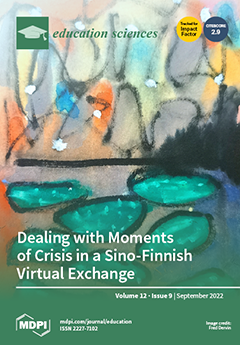The switch to emergency remote teaching (ERT) due to the first COVID-19 lockdown demanded a lot from university lecturers yet did not pose the same challenge to all of them. This study sought to explain differences among lecturers (
n = 796) from universities in France, Germany, Switzerland, and the UK in their use of educational technology for teaching, institutional support, and personal factors. Guided by the Social Cognitive Theory (SCT), lecturers’ behavior (educational technology use), environment (institutional support), and personal factors (ERT self-efficacy, continuance intentions, and demographics) were examined. Latent class analysis was employed to identify different types of lecturers in view of educational technology use, while multinomial regression and Wald chi-square test were used to distinguish classes. The largest latent class were
Presenters (45.6%), who focused on content delivery, followed by
Strivers (22.1%), who strived for social interaction,
Routineers (19.6%), who were ready for online teaching, and
Evaders (12.7%), who evaded using technology for educational purposes. Both personal factors and perceived institutional support explained class membership significantly. Accordingly,
Evaders were older, less experienced, and rarely perceived institutional support as useful.
Routineers, the
Evaders’ counterparts, felt most self-efficient in ERT and held the highest continuance intentions for educational technology use. This research suggests that universities engage lecturers in evidence-based professional development that seeks shared visions of digital transformation, networks and communities, and design-based research.
Full article





